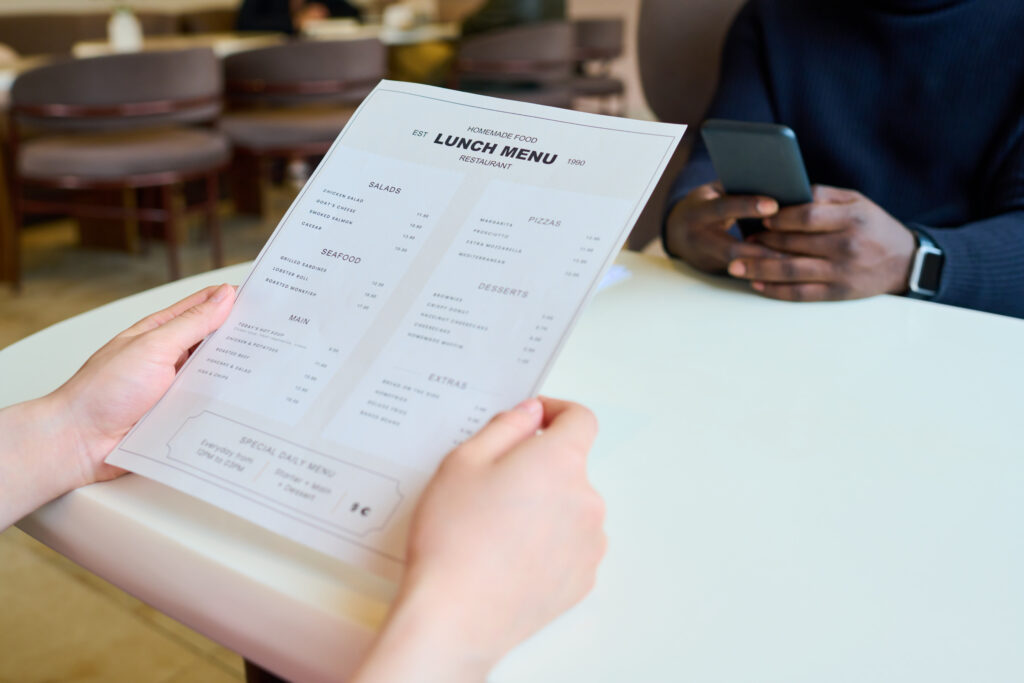
theCloud

3 Best Practices to Optimize Restaurant Meal Prices
Looking for ways to optimize your restaurant’s meal prices without sacrificing quality or customer satisfaction? Look no further! In this blog post, we’ve rounded up the top three best practices that will help you strike the perfect balance between profitability and affordability. From leveraging data-driven pricing strategies to offering enticing meal deals, our tips are guaranteed to boost your bottom line while keeping your diners happy and coming back for more. So buckle up and get ready to take your restaurant’s menu pricing game to the next level with these tried-and-true tactics!
Focus on quality
When it comes to optimizing restaurant meal prices, one of the best practices is to focus on quality. This means offering menu items that are made with fresh, high-quality ingredients and that are prepared in a way that is both delicious and satisfying. It also means providing good service and creating an overall dining experience that is enjoyable for customers.
While it may cost more to offer quality menu items, it is important to remember that this investment will pay off in the long run. Customers who have a positive experience at a restaurant are more likely to come back and recommend the establishment to others. In addition, focusing on quality can help to attract new customers who may not have otherwise considered dining at the restaurant.
Smart Menu Engineering
Smart menu engineering is one of the best practices a restaurant owner or manager could do. By analyzing the menu and identifying high-profit items, restaurant owners can set prices that maximize profitability. Menu engineering involves grouping menu items by their profitability and popularity, which helps in setting prices that are profitable for the restaurant and affordable for customers. Additionally, menu engineering can help in identifying items that are not profitable and may need to be removed from the menu. This can be a tricky balancing act, as you need to find the right price point that will attract customers without turning them away.
There are a few key things to keep in mind when menu engineering. First, you need to understand your target market and what they are willing to spend. If you are targeting a more budget-conscious crowd, then you’ll need to keep your prices lower. On the other hand, if you are aiming for a higher-end clientele, you can charge more for your dishes.
It’s also important to consider your food costs when setting menu prices. You don’t want to price yourself out of profitability, so make sure that your dishes are priced in a way that covers all of your costs while still providing a reasonable profit margin.
Finally, always be mindful of the competition. Take a look at what similar restaurants in your area are charging for their menus and use that information to help inform your own pricing decisions. By taking all of these factors into account, you can ensure that you are setting the right price point for your restaurant’s dishes.
Portion Control
Portion control is one of the most important aspects of optimizing restaurant meal prices. By controlling the portions of food served, restaurants can ensure that they are providing their customers with value for money.
There are several ways to control portion sizes. One way is to offer a range of portion sizes, so that customers can choose the amount they want to eat. Another way is to analyze which is the most optimal portion size that would fit an average customer and serve it to all. Restaurants should also be careful not to over-serve food. This not only wastes food, but also increases costs. When plating food, restaurants should aim to provide just enough for each customer to feel satisfied.
Portion control is an important tool for not only optimizing restaurant meal prices but also could add up to the company’s CSR initiatives. By controlling portion sizes and providing the customer with various choices – restaurant could increase customer satisfaction and reduce food waste.
Partnerships
In addition to portion controls, menu engineering and focusing on quality – there is a possibility to optimize prices by partnerships. These could include good supplier relationships or outsourcing of other activities, such as staff or services, such as marketing.
As an example could be The Cloud. We help restaurants to optimize their kitchens by effectively generating profits during all times and increase the number of orders. With this comes the increased usage of food products and ingredients, which may help to negotiate better prices with the suppliers and always keep food items fresh and high quality. This reduction in costs can allow restaurants to optimize their meal prices by offering more affordable options to customers without sacrificing quality.
Conclusion
Restaurants need to be mindful of the prices they set for their meals. By following best practices such as conducting market research, utilizing yield and food cost management methods, and leveraging customer feedback, restaurants can optimize their meal prices to maximize their profits while still delivering quality products that keep customers coming back. With these tips in mind, restaurants will be well-equipped to navigate the ever-evolving restaurant landscape.